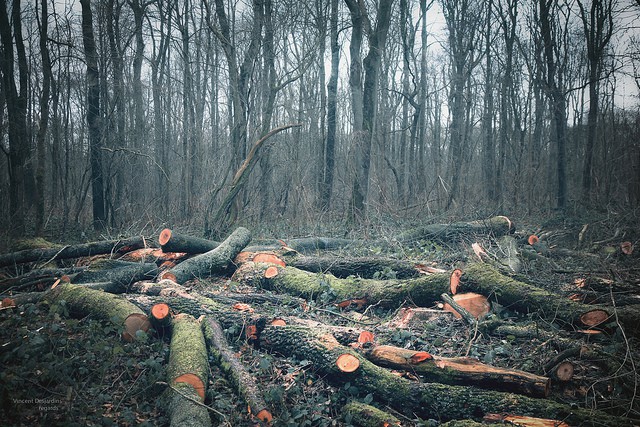What are Different Types of Climate and Difference Between Weather and Climate

Before we know about the climate, we need to know what the weather is. By the term weather, we mean a set of conditions prevailing in the atmosphere of a particular location for a limited period, for example, a whole day or at night or at a specific time during a day.
Although only one atmosphere exists on earth, still the weather isn’t the same worldwide. It is different and changes over minutes, hours, days, and weeks in different parts of the world.
The atmosphere in a particular area depends upon many different factors like temperature, air pressure, humidity, speed of the wind and its direction, and many other things. They altogether determine the weather of a location at a given point of time. Therefore weather refers to the short-term changes in the atmosphere. Whereas climate describes the average condition of the atmosphere in a specific area over a long period like 30 years or more.
The climate of an area gives information about averages of temperature, precipitation, humidity, sunshine, wind, and other measures of weather that occur over a long period in that particular place.
Therefore weather is a phenomenon that is actually happening now, while climate is what you are expecting in the future.
Difference Between Weather and Climate
Although the weather and climate are closely related, they are different, and the most significant difference between the weather and climate is the duration. Weather conditions are short term phenomena, whereas climate involves an extended period.
Weather is the information related to daily changes in the atmospheric conditions of any area. In contrast, the climate is the statistical weather information that provides the average weather condition of that area over a long period.
Weather conditions change from time to time for a single point in a location. But climate conditions are far less volatile compared to the weather and describe conditions of vast areas like a country as a whole or a part of it or even groups of countries.
The temperature, humidity, cloudiness, precipitation, rain, wind, pressure, flooding, ice storms, etc. affect the weather instantly. Whereas the factors of weather like humidity, temperature, precipitation, rainfall, etc., that have occurred at that particular place over a long period affect climate. The climate changes that occur may take hundreds and thousands of years.
The weather usually affects the day to day operations of human beings, including transportation service, agriculture, power supply, etc. Conversely, the climate has a significant impact on agriculture, industries, affecting the livelihood of the peoples.
Very frequently, changes can be observed in weather conditions. Still, it’s a matter of a pretty long time for changes to occur in the climate conditions.
It is the job of the Meteorological Department of any particular place to observe the weather forecasting, and the study is known as Meteorology. On the other hand, the prediction of the climate made by The Climate Prediction Centre is known as the climatology.
What are the Different Types of Climate?
Usually, climates are of three types viz., warm, temperate, and polar. At low latitudes, warm climates are found. This type of climate is characterized by high temperatures because of constant radiation from the sun. The temperate climates are seen at mid-latitudes, where temperatures are usually mild to moderate. And polar climates generally have temperatures below 10°C during the warmer months at high latitudes. The polar climate is typically found in the polar circles.
However, the climates are further classified under these three groups more precisely, which is essential for us to know.
There are several classifications of climate; however, the best-known one is made by Wladimir Köppen, a German botanist and climatologist of Russian origin. Based on that, the climate is classified on the earth into five primary types, and it is represented with the letters A, B, C, D, and E. The system utilizes both temperature and precipitation along with corresponding vegetation, to categorize global biomes.
Group A: Tropical Climate
The tropical, moist climates range about 15-25º latitude northwards and southwards of the equator. The tropical region is hot and wet. Southeast Asia, jungles of South America and Africa, and the islands of the Pacific have a tropical climate. These forest areas contain the greatest diversity of flora and fauna with more than 100 tree species and various animal species like birds, insects, and mammals.
Under this group, there are three kinds of climate, a) Tropical Wet, b) Tropical Monsoon climate, and c) Tropical Wet and Dry.
a) Tropical Wet
Here the climate remains warm, but there is regular rainfall. The annual rainfall is more than 150 centimeters, and temperatures remain constant throughout the year and hardly vary.
b) Tropical Monsoon Climate
The annual rainfall in areas with a Tropical Monsoon climate is similar to that of Tropical Wet climate. Still, precipitation occurs primarily within the 7-9 of the warmest months of the year. The rain is less for the rest of the year.
c) Tropical Wet and Dry
Climate, in this case, is usually mild to hot. Temperatures vary moderately. It is also known as tropical savannah. An extended dry season observed during the winter. The rainfall is less than 1000mm during the wet season, however, occurring mainly in the summertime.
Group B: Dry Climate
The extension of regions of dry climate is 20-35º latitude northwards and southwards from the equator.
Under this group, there are two kinds of climate, a) Arid and b) Semiarid
a) Arid
Arid climate, or true desert climate, extends about 12 percent of the earth’s total land. In areas with an arid climate, summers are hot, and winters are cool or warm. Rainfall is low. The deserts of central Asia and North Africa, the southwest United States, and inland Australia have an arid climate. This climate supports mostly shrubs, and short, woody trees and animal life includes birds, insects, reptiles, rodents, and small carnivores.
b) Semiarid
Semiarid climate or steppe climate spans about 14 percent of the earth’s land and forms grassland type climate. The climate is hot, but it is more moderate than the arid climate. This kind of climate usually falls in between an arid climate and tropical climates.
Group C: Moderate Climate: Moist Mid-Latitude Climates with Mild Winters
Moderate climate extends between 30-50º latitude northwards and southwards from the equator covering the eastern and western extremes of each continent.
Under this group, there are three kinds of climate, a) Mediterranean, b) Humid Subtropical, and c) Marine West Coast
a) Mediterranean
The climate here is warm to hot. Summers are dry, while winters are mild with the heaviest precipitation. The land surrounding the Mediterranean Sea, South America, and Southern California have this kind of climate. In this climate shrubs, less than three feet tall are seen, populated by small, nocturnal animals like geckos, rodents, and snakes hunted by raptors like hawks.
b) Humid Subtropical
Regions in the eastern part of the continents usually have this kind of climate. The summers are hot, humid with frequent thunderstorms, and winters are mild colder. There is a regular distribution of precipitations throughout the year. However, hurricanes are frequent.
c) Marine West Coast
This climate is seen in the western areas of the continents, where the direction of the wind is from the sea to land. Summers are warm, humid with moderate rainfall most of the time in the year. Winters range from cold to temperate. The cities with this climate are Seattle, the USA, Wellington, and New Zealand.
Group D: Continental climate: Moist Mid-Latitude Climates with Cold Winters
Summers in areas with Continental climate is typically warm but can also be cool, while winters are cold. Average temperatures in summer climb above 10º Celsius and colder months can be less than 3º Celsius.
Under this group, there are two kinds of climate, a) Humid Continental and b) Subarctic
a) Humid Continental
The regions with Humid Continental climate have moderate to hot summers and cold winters. The temperature usually varies between 3°C to 22°C throughout the year. Eastern Europe mostly has a humid continental climate.
b) Subarctic
This climate has cool summers, and winters are cold. Maximum rainfall occurs during the summer months. This Subarctic climate is found in northern Scandinavia and Siberia.
Group E: Polar Climate
In the polar circles, low temperatures rule throughout the year. The temperatures are less than 10º Celsius in the warmest months, though there are variations. The northern coastal regions of North America, Asia, Europe, and in Greenland and Antarctica have this kind of climate. Plantlife except for some algae is non-existent, while the few animal species include polar bears, penguins, killer whales, and seals.
Under this group, there are two kinds of climate, a) Tundra and b) Icecap
a) Tundra
This climate is dry, the soil remains frozen permanently as permafrost and can be hundreds of meters deep. The northern extremes of North America and Asia, parts of Russia, southern coast of Greenland, and the edges of Antarctica have this kind of climate. Plantlife includes lichen, mosses, grasses, and shrubs. Animal populations expand and shrink radically depending on the season and include bears, caribou, foxes, squirrels, wolves, and migratory birds.
b) Icecap
The icecap is the coldest weather on earth, and has temperatures that are rarely below freezing point. Here the surface mostly remains covered in snow or ice permanently. Greenland and most of the Antarctic continent have this climate.
Highland Climate
Sometimes, this climate is included in the polar climate, but some consider it as an individual climate.
Regions at very high altitudes in mountainous terrain have this kind of climate. These areas experience rapid elevation changes, causing rapid climate changes over short distances.
References:
https://www.ncei.noaa.gov/news/weather-vs-climate
https://oceanservice.noaa.gov/facts/weather_climate.html
https://nsidc.org/cryosphere/arctic-meteorology/climate_vs_weather.html
https://www.americangeosciences.org/critical-issues/faq/difference-between-weather-and-climate






